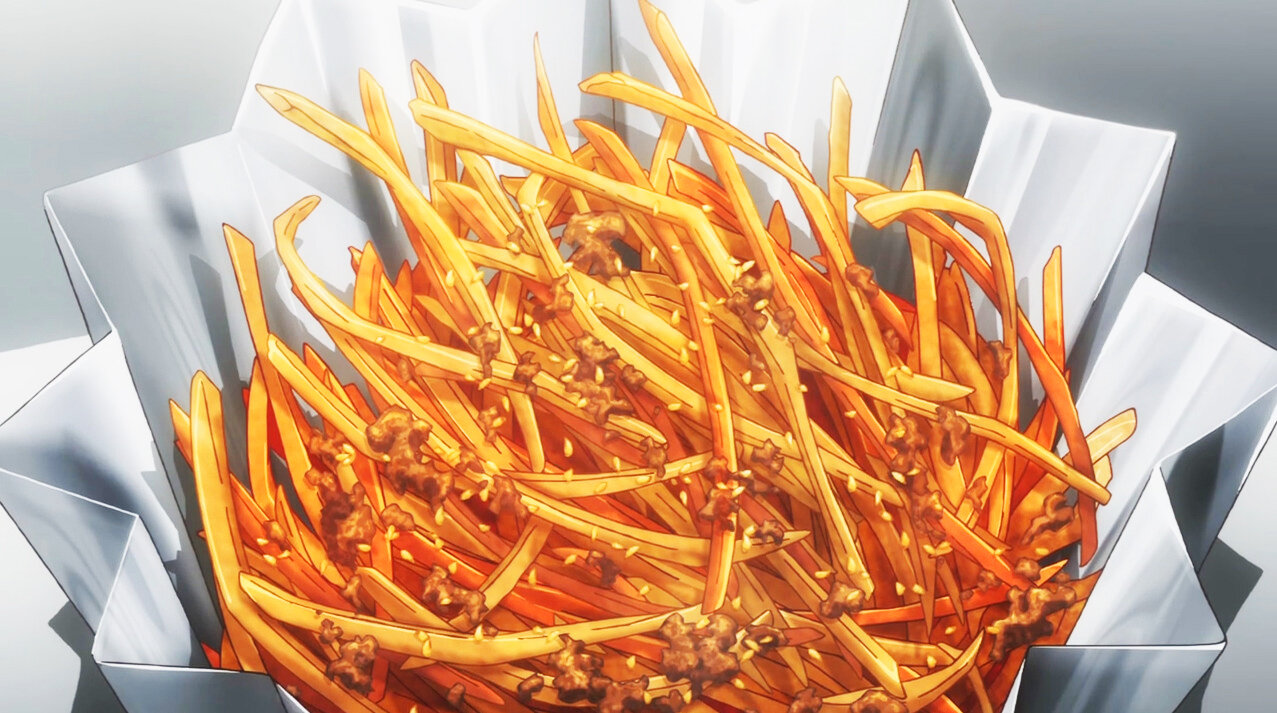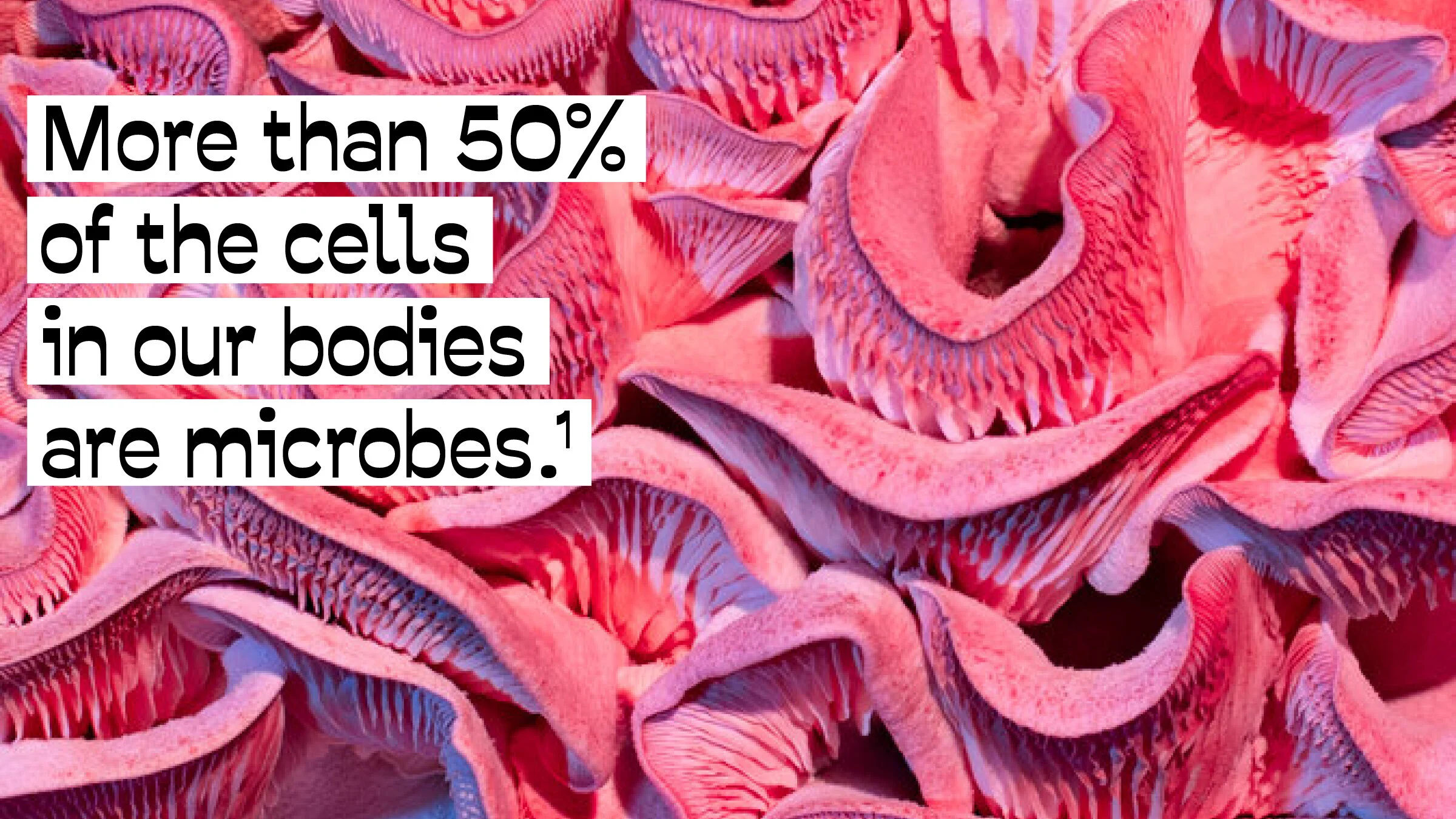
Haystacks
Crunchy mushroom bites dusted with immune boosting spices, mushroom powder and sea salt.
A SNACK FOR YOUR MYCOBIOME
Microbes make up more than 50% of the cells in our bodies,1 helping us ward off disease and maintain our health. While that might have been an unappetizing statistic in years past, probiotic foods and supplements are a billion-dollar industry that’s projected to reach $76.1 billion by 2027 globally.2 Yet in light of increased frequency of sanitizing procedures to prevent the spread of COVID-19 and years of over-prescribing antibiotic medications, we’re at a risk of depleting or permanently altering our microbial companions. However, our understanding of mycobiomes — the “distinct communities of fungi […] that shift in population based on our diet and other environmental influences”3 within our bodies — is currently developing and could be a new space for snack food innovation.
Although typically relegated to the side of our plates, edible mushrooms are prebiotic (spur the growth of good bacteria) and have strong potential to be essential in maintaining a healthy mycobiome. Furthermore, they are “rich in protein, with an important content of essential amino acids and fiber, [… and] excellent important fatty acids content [… in addition to providing] a nutritionally significant content of vitamins (B1, B2, B12, C, D, and E)”.4 Historically, mushrooms have been widely consumed for medicinal purposes: from truffles in ancient Egypt and Greece for nourishment, to Reishi in Traditional Chinese Medicine for stress relieve and balance.3 And to this day, “mushroom extracts are commercialized as dietary supplements for their properties, mainly for the enhancement of immune function and anti-tumor activity”.4
Since mushrooms grow by breaking down and absorbing organic matter, we can easily and non-invasively influence their flavor and nutritional content by customizing the substrate they grow in with the use of farm and agro-industrial byproducts that otherwise would be burned or discarded. This suggests that edible mushrooms “could be an excellent source of many different nutraceuticals and might be used directly in human diet and to promote health for the synergistic effects of all the bioactive compounds present”.4 There is an opportunity to create a plant-based snack that is not only satisfying, but also supports our mycobiome, reduces agro-industrial waste and provides a rich source of customized nutrients.
(Image credits: Phyllis Ma, Mushroom and Friends, Still from Shokugeki No Soma, S1 E9, YEMA packaging design by Anagrama)
Haystacks are a snack aiming to take advantage of this opportunity. They are crunchy mushroom bites dusted with immune boosting spices, mushroom powder and sea salt. Inspired by Japanese fried burdock root and Indian pakora, Haystacks are small air-fried tangles of thinly sliced mushrooms, resulting in a crisp and crunchy exterior that gives way to a tender, savory center. The mushroom powder reintroduces nutrients lost from the cooked mushroom fritters, while turmeric, ginger, cinnamon, cayenne pepper and garlic provide an enticing flavor as well as anti-oxidative, anti-inflammatory, circulatory and digestive health benefits. While many mushroom-based snacks are branded as meat alternatives, Haystacks showcase all the different possible textures and flavors of mushrooms rather than trying to mask their flavor or make them taste like meat.
(Image credit: Phyllis Ma, Mushroom and Friends)
To cultivate the mushrooms at the center of Haystacks, we will develop different substrate mixes using both edible and inedible cellulose-rich farm waste in addition to organic agro-industrial waste (e.g. corn cobs and sugarcane bagasse — the byproduct of sugar production), which have been shown to increase the protein and mineral contents of oyster mushrooms.5 Additionally, we will add herbs and sawdust from different types of trees to cultivate mushrooms with different flavor profiles to create variety and depth of flavor from the inside of the mushrooms. After being processed by the mushrooms, we can then resell the spent mushroom substrate back to farms to add “organic matter and structure to the soil [... to improve] soil structure and […] provide a few nutrients”.6
We will market Haystacks to frequent snackers aged 25-40 who live in densely populated cities and have “less healthful overall nutrient intakes[…][,] including cholesterol, vitamins B-6 and C, folic acid, calcium, magnesium, iron, sodium, potassium, and fiber”.7 They are looking for a nutritious afternoon or evening snack to supplement their daily meals and to share with friends. These people aren’t strict dieters; instead they prefer to practice intuitive eating and allow themselves to indulge in snacks freely and frequently. As such, they generally purchase snack foods when they’re out and about, taking a short break from work or on their way home. They have adventurous palettes and enjoy discovering new foods regularly.
Haystacks are available in single serving packs and resealable sharing-sized packs to accommodate solo and social snacking scenarios. Rather than branding them as a typical health food, we have a playful and irreverent brand design that stands out among other products within the category. As we launch, we’ll focus our distribution in boutique grocery stores and small specialty markets that sell a mix of food and non-food items where we have a better chance of being noticed than in larger chain grocery stores. A stylized Instagram presence (both paid and organic) and partnerships with lifestyle brands and other newsletters will help introduce our brand to consumers and casually educate them on the health benefits of eating mushrooms without being preachy.
While superfood snack trends come and go, edible mushrooms are a sustainable and under-appreciated source of plant-based protein, vitamins and minerals. Their cultivation can directly make use of and reduce both edible and non-edible food waste, extracting nutrients that otherwise would have gone to waste. Haystacks reimagine how people eat and experience mushrooms by showcasing different textures and pairing them with other health-boosting spices. Furthermore, they are a rich source of protein and other nutrients that frequent snack eaters often lack in their diets, so we are able to meet people where they are with the nutrients they need without asking them to change their habits. In a future where people pay as much attention to their mycobiome as they do their microbiome, we’ll have already set a high standard for nutrition, taste and sustainability wrapped up in a crunchy, flavorful snack.



